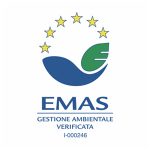Lower Secondary School
A visit to the multisensory Visitor Centre
A virtual walk on the sea bottom, where the use of our senses is stimulated by a multisensory tour that simulates a real underwater experience. Participants walk barefoot and dive into a variety of sensations: touch is activated in the touch-tank, hearing is aroused by the surrounding sounds of the sea, sight is stimulated by the “diving dome” and the educational fish tanks. Discovering the marine world through the senses and a direct contact with marine organisms increases emotional participation and makes learning easier and more effective.
Indoor activity.
Duration: approximately 1 hour.
NOTE: this preliminary visit to the Visitor Centre is strongly suggested before participating in any other educational activity.
A walk in the Reserve
A historical-naturalistic trail leads visitors around Miramare MPA to learn how and why the first Italian marine reserve was born, and to discover its extraordinary biodiversity and the organisms that live in it. The trail starts from the “Castelletto” of Miramare, hosting the Visitor Centre, reaches Bagno Ducale and ends up at the little beach in front of the ex-Scuderie (horse stables) of Miramare Castle, two locations that are usually closed to the public.
Outdoor activity.
Duration: approximately 1 hour.
A walk in the Reserve
A historical-naturalistic trail leads visitors around Miramare MPA to learn how and why the first Italian marine reserve was born, and to discover its extraordinary biodiversity and the organisms that live in it. The trail starts from the “Castelletto” of Miramare, hosting the Visitor Centre, reaches Bagno Ducale and ends up at the little beach in front of the ex-Scuderie (horse stables) of Miramare Castle, two locations that are usually closed to the public.
Outdoor activity.
Duration: approximately 1 hour.
Identifish & Home-sweet-home
This educational activity offers an insight into marine organism classification through a team gameplay (Identifish) that helps to understand how structures, forms, sizes, colours and functions are related to an organism’s life environment. The “Home-sweet-home” activity provides a further insight into the evolutionary meaning of structures and features associated to the different organisms.
Indoor or outdoor activity.
Duration: approximately 2 hours.
Lab on the chemical-physical parameters of seawater
During this lab, participants will learn how to study the sea world starting from the basics: with the aid of scientific instruments they will measure the most important seawater parameters, such as salinity, density, dissolved oxygen, and other relevant meteo-marine parameters, such as air temperature, atmospheric pressure and wind speed. All these data, far from cold and impersonal, will offer a new reading key to understand the marine ecosystem and its role in the life of our planet as a whole.
Indoor or outdoor activity.
Duration: approximately 2 hours.
Mimicry
This educational activity tackles the topic of mimicry in the animal and plant world, exploring all varieties and considering both marine and terrestrial habitats. Working in groups, participants will observe real organisms and watch a series of videos and pictures to understand the mechanisms of mimicry, organizing concepts and examples in learning sheets. Children will also perform short role plays to simulate mimicry strategies, and this will give them a feeling of how challenging the daily game of survival can be in nature, where the winner is not always the strongest one…
Indoor or outdoor activity.
Duration: approximately 2 hours.
The tidal environment
This activity takes place on the exclusive beach of Miramare MPA, that can only be visited in the presence of a WWF guide, and is focused on one of the most peculiar features of the Gulf of Trieste, its tidal excursion. Indeed, here you can find the most dramatic tides of the Adriatic sea, with tidal ranges that can reach one metre. Participants will comb the beach searching for animals and plants, and will identify them using easy-to-read spotting sheets. They will also collect data along a basic transect to understand how the different species have adapted to this transitional environment. Getting an insight into this fragile and precious environment will allow students to appreciate its ecological value and the importance of protecting it.
Indoor or outdoor activity.
Duration: approximately 3 hours.
NOTE: The activity can be carried out only in certain phases of the tidal cycle and in specific days, and for a maximum of two classes per day. Feasibility must therefore be checked by calling the Educational Activity Office.
Sea and garbage
This activity focuses on the environmental impacts of human garbage, reflecting on how the waste we produce is a source of pollution, affects natural cycles and food chains and has other negative effects on the ecosystem. The aim of this activity is to tackle such a relevant issue, reflecting on its causes and analyzing the strategies adopted so far to limit it. Participants will carry out field work in order to collect and classify waste found along the shore; data collected will then be analyzed, also determining the source and the average degradation time of the different types of litter. All these information will be discussed in order to identify local and global actions that should be undertaken for a more environmental friendly waste management.
Indoor or outdoor activity.
Duration: approximately 2 hours.
NOTE: The activity can be carried out only in certain phases of the tidal cycle; feasibility must therefore be checked by calling the Educational Activity Office.
The food web
This activity explores the strong mutual relationships that regulate prey and predator lives in their neverending struggle for survival. Working in groups, participants will familiarize with this complex topic by carefully observing organisms and collecting the signs left along the shore. After having gathered enough information, students will build a shore food pyramid and will try to understand how energy flows through the various trophic levels.
Indoor or outdoor activity.
Duration: approximately 2 hours.
It’s all about benthos
Participants will find a benthic sample, specifically collected by the MPA staff for this activity, waiting for them. In this laboratory, students will turn into young researchers involved in the analysis of sea-bottom samples, searching for organisms that live burrowed in the sandy-muddy bottom. The observation of these organisms, first with bare eyes and then with the aid of a microscope, will allow to discover their main characteristics and to understand their lifestyle and ecological role.
Indoor or outdoor activity.
Duration: approximately 2 hours and 30’.
NOTE: the activity is subject to favourable meteo-marine conditions for the offshore collection of a benthic sample.
It’s all about plankton
Participants will carry out theoretical and practical activities on plankton samples collected by the MPA staff. They will observe a series of plankton samples, both live and stained, to get acquainted with these animals and plants that are at the base of the food web. Working in groups and using microscopes and spotting sheets, students will collect data on the forms, structures and habits of this diverse group of organisms, and will discuss them with the rest of the class.
Indoor activity.
Duration: approximately 2 hours.
NOTE: the activity is subject to favourable meteo-marine conditions for the offshore collection of a plankton sample.
Mussel farming in the Gulf of Trieste
Participants will have the opportunity to meet fishermen and their fully-equipped fishing boats on the docks of Grignano harbour, to discover the “behind the scenes” of mussel farming and get an insight into the challenging and the charming aspects of this work. Working in groups, students will be involved in the on-site observation of a portion of mussel long-line, and with the aid of magnifying lenses and microscopes they will explore the rich animal and plant community associated with mussels.
Indoor or outdoor activity.
Duration: approximately 2 hours.
Sea watching
Snorkelling, also known as sea watching, is not only a summer pastime but also an educational activity that can hold many surprises. Equipped with fins, diving mask and snorkel, participants led by a qualified guide will discover the underwater MPA world along a shallow-water trail (1.5 m) winding along the rocks just a few metres offshore.
Indoor and outdoor activity.
Duration: approximately 2 hours and 30’ (including a visit to the Visitor Centre).
NOTE: this activity is suggested for the last three years of primary school.
NOTE: only in June and September.



